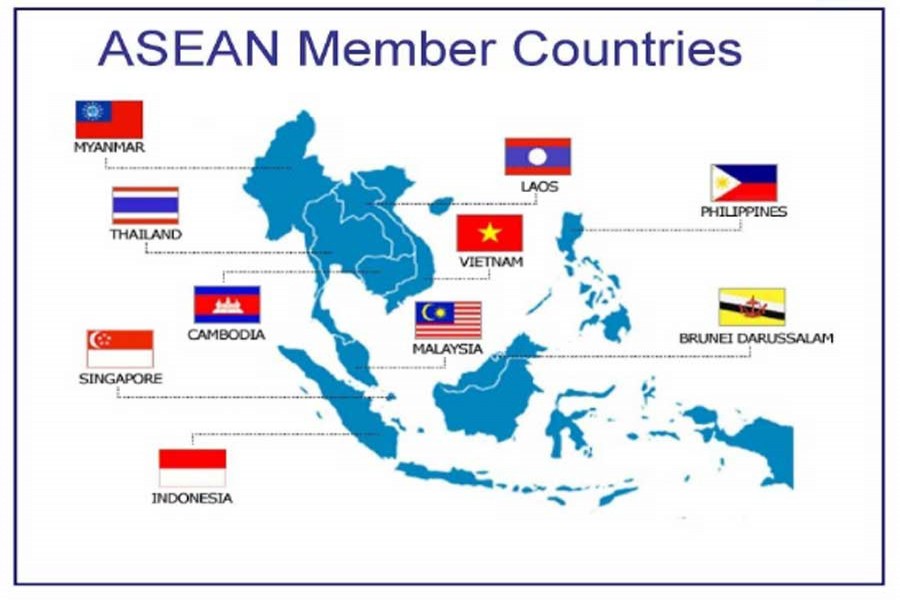Competition is acceptable. It is natural for countries to compete for markets, technology, military power and so on. But to get into a confrontation which can lead to serious consequences, even war, is not good. Nobody is going to win. Especially if and when two major powers like China and the US clash, it will affect other countries. The trade war, for example, will have an impact not only on the US and China but also on other countries because of the global supply chain, markets and the global financial system, as everything is interdependent and interlinked.
Some observers argue that ASEAN members may stand to benefit from trade tensions between the US and China. There have been reports about investments going to ASEAN and companies starting to move out of China into Vietnam, Thailand and Malaysia. But in the long run, there could be negative impacts.
If the Chinese and US economies are badly hit by the trade war in terms of supply glut and rising prices because of tariffs and so on, the two countries, which are both major export markets for Southeast Asia, may import less from ASEAN members. The trade war could also affect the financial system, affecting currencies and things like that.
ASEAN would like to see more cooperation between the US and China rather than confrontation. They welcome efforts by both China and the US to resolve problems. Discussions between Chinese President Xi Jinping and US President Donald Trump as well as trade negotiations between the two countries are considered very helpful.
Amid intensifying China-US competition, not only in economy and trade, but also in technological and strategic spheres, concerns are rising over whether ASEAN may have to one day take sides between China and the US. There are two ways to look at it: ASEAN taking sides as a group or countries of the bloc separately taking sides.
From the perspective of individual ASEAN members, it depends on their foreign policies and their relations with the two big powers. For example, if you look at Thailand and the Philippines, they have strategic bilateral treaties with the US, leading to certain obligations on their part. But if it is ASEAN as a whole, as a group and community, it seems that the 10-member organization needs good relations with all major powers.
Both China and the US are strategic partners of ASEAN. Hence, the bloc should not, and will not, take sides.
In 1971, a declaration called the Zone of Peace, Freedom and Neutrality was signed by the foreign ministers of ASEAN members in Kuala Lumpur, capital of Malaysia. At that time, there was intense competition between the US and the Soviet Union. The group had talked about being neutral then - meaning it didn't want to take sides.
The situation in the 21st century is different, but it does not mean ASEAN cannot take a position of neutrality, which means it stands close to each side. As long as China, the US, and other major powers recognize ASEAN as a group of peace-loving countries that want stability and development in the region, and if there is mutual respect, there shouldn't be any problem.
It's noteworthy that the ASEAN Outlook on the Indo-Pacific was adopted at the 34th ASEAN Summit held in late June. The document is significant because it provides ASEAN's perspective on the geostrategic concept of the Indo-Pacific region and gives an outline of how the organization views development in this region.
Different from the US Indo-Pacific Strategy whose emphasis is largely on defense and security and which is generally considered as taking aim at China, ASEAN's Indo-Pacific Outlook does not provide any strategy in the context of defense or political security. It emphasizes certain things that ASEAN should pursue, including connectivity, sustainable development, maritime cooperation and so on.
Everybody is paying attention to the Indo-Pacific region because it's a dynamic and very important sphere. It's been long argued that the 21st century will be the Asian century. Earlier on we talked about the Asia-Pacific region, lately there is more emphasis being given to the Indian Ocean for various reasons because of things that have been happening, like piracy, the need for safety of navigation, maritime security and so on.
Countries including the US, Japan and India have all put forward their visions or initiatives for the Indo-Pacific region. What is ASEAN's role? If you look at the regional architecture, ASEAN has been able to bring together these countries. The East Asia summit, for example, includes 18 countries: 10 ASEAN members plus almost all the major powers. So it is important that ASEAN remains stable. Peace in the Southeast Asian region will provide an enabling environment for development - this can help stabilize the region.
The article was compiled by Global Times reporter Yu Jincui based on an interview with Tan Sri Rastam Mohd Isa, chairman and chief executive of the Institute of Strategic and International Studies Malaysia, on the sidelines of the Eighth World Peace Forum being held in Beijing on Monday and Tuesday. [email protected]

- Friday, 10 January 2025 |
- Today's FE |
- e-Paper |
- Beta Website

